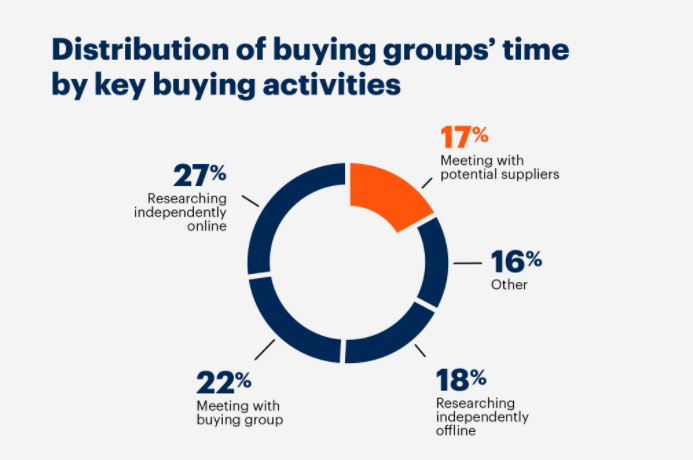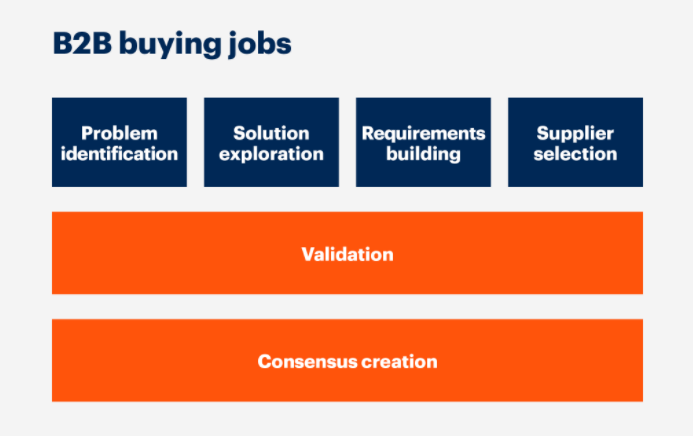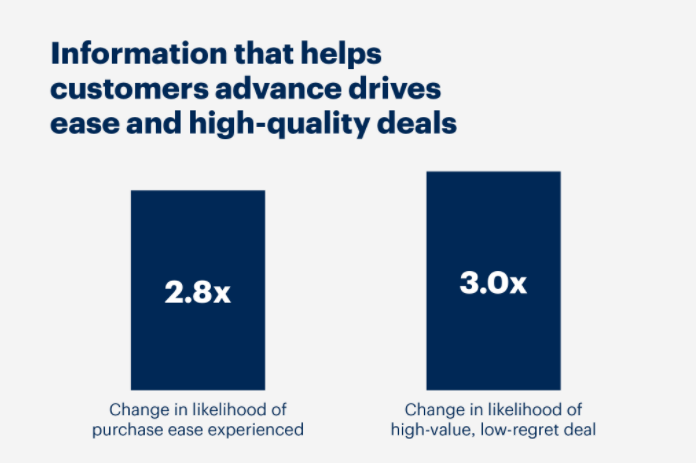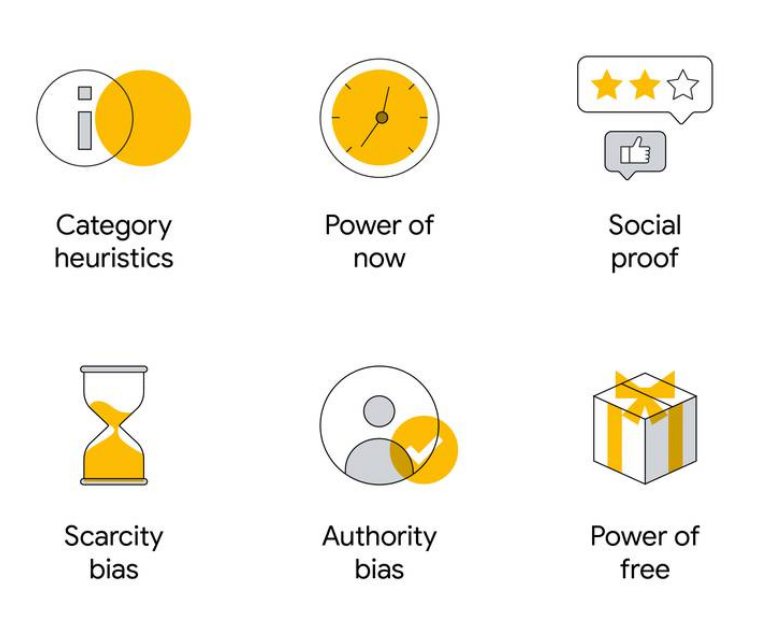It’s a widely known fact that the COVID-19 pandemic spawned drastic changes in the business sector, dramatically transforming the consumer buying journey across industries. However, consumers aren’t the only ones changing how they approach the purchase process. Transformation is also evident in business-to-business (B2B) commerce.
B2B buyers are now exhibiting wants, expectations, and needs that are different from what we used to know. But how exactly is the B2B buying journey evolving, and how should B2B marketers adapt? Read on to find out!
The New B2B Buying Journey
Over the last few decades, the B2B buying process has become more complex. It has come to include various new stages – identifying business needs, researching solutions, communicating with stakeholders, and evaluating and analyzing options before making a final decision.
However, because of the significant shift in the marketplace structure and the decline in face-to-face interactions due to the COVID-19 health crisis, the B2B purchase journey has become more streamlined.
B2B buyers now conduct shorter and more efficient online research. According to a study conducted by Gartner, 17% of a buyer’s time is spent meeting with suppliers, while 27% is allocated to independent online research.
Here are other significant findings of the Gartner research:
1. Sellers have fewer opportunities to influence customer decisions
Since information is accessible online, B2B buyers can now easily canvas, compare, and gather data about suppliers independently. In evaluating multiple suppliers, they only spend approximately five to six percent of their time communicating with sales representatives. Consequently, sellers have fewer opportunities to influence the purchasing decisions of their prospects.

2. Buyers are researching on their own terms
In-person sales representatives top the list of less critical sources influencing purchasing decisions. On the other hand, websites, social media, and webinars have been ranked as the most important references for B2B buyers. With the prevalence of these platforms, the B2B buying journey is now circulatory instead of linear.
As earlier mentioned, B2B buyers are now afforded more opportunities to look up potential suppliers online. They loop across a typical B2B purchase, completing buying jobs simultaneously. Thus, for B2B sellers, there is no handoff from marketing to sales, as the purchase process is now parallel instead of serial.
3. The B2B buying journey isn’t predictable
B2B buyers are now creating their own paths to purchase, causing a paradigm shift in the B2B buying process. Based on the findings of the Gartner study, prospective clients can now better come up with their own terms and conditions given all the research they conduct and the information they consume. In turn, this ends the commonly accepted and traditionally constructed journey maps and artificially timed conversion points.
Longer cycles and touchpoints have also increased. Add the fact that the typical buying group of a complex B2B solution consists of six to ten decision-makers, each equipped with four to five deconflicting facts they’ve gathered.
Hence, the expanding buying group and the inclusion of validation and consensus creation in B2B buying jobs are making it difficult for customers to purchase efficiently. In fact, 77% of B2B buyers have stated that their latest purchase was complex or challenging.

4. Buyers value information that simplifies the purchase process
The Gartner research shows that customers who perceive information from suppliers as helpful are three times more likely to purchase bigger deals with less regret. In addition, they are 2.8 times more likely to experience ease in their purchase transactions.
For suppliers, this means providing buyers with information that specifically addresses their needs can help drive sales. With customers bouncing from different buying jobs and looping around many sources, simplified information is then crucial to making purchases more manageable.

5 Ways Marketers Can Leverage the Evolving B2B Buying Journey
In rethinking their marketing strategies to suit the new B2B buying journey, companies have to organize their practices around a circulatory framework. Instead of moving opportunities from one level to the next and waiting for deals to be closed before progressing, they should simultaneously sell their solutions with enough predictability and speed.
Here are ways sellers can effectively leverage the new B2B buying process:
1. Simplify the buying process.
B2B transactions are generally complicated. And as buyers rely less on sales representatives to get information about a product, it becomes vital to improve the quality of limited interactions with customers.
Marketers can achieve this by customizing information according to each buyer’s needs. Leveraging experts to supplement the expected shortcomings of sales representatives can also enable customers to better navigate the purchasing process.
2. Provide useful information to enable customers to complete buying jobs.
With technology dominating almost every aspect of business, B2B buyers now look for readily accessible information on the Internet when embarking on the purchase process. Marketers can maximize this opportunity by integrating into their campaign the strategy called buyer enablement. This is aimed at providing useful information that allows buyers to complete the buying journey as efficiently as possible.
Buyer enablement can come in the form of prescriptive advice, which seeks to ease customers’ buying stress by providing recommendations and discussing best practices. Specific examples include webinars, blogs, and white papers.
Practical tools that supplement prescriptive advice are also a form of buyer enablement. These include tools in evaluating suppliers, checklists, and ROI calculators, among others.
3. Support B2B buyers through online channels.
Whether online or offline, B2B buyers want immediate feedback. They want information that’s relevant to their needs, wherever they are on the customer decision journey. As such, suppliers should strive to be responsive in all stages of the purchase process to allow customers to accomplish buying tasks as efficiently as possible.
It’s particularly important that suppliers establish an integrated ecosystem using multiple platforms to amplify their reach and expand customers’ access to relevant product information. Due to the restrictions brought about by the COVID-19 pandemic, customers have turned to a vast array of channels when searching for product information. This serves as an opportunity for suppliers to leverage digital platforms to support customers in navigating the buying process.
4. Adopt a buyer-driven B2B marketing strategy.
Customers simultaneously seek validation and consensus from various stakeholders throughout the buying process. These two jobs are always present while they are purchasing. It then results in a buying journey that resembles more of a maze rather than a linear path.
To succeed in moving forward, suppliers should simplify their prospects’ B2B buying process with buyer enablement. They should guide their customers as they explore their options and provide insights to help their prospects overcome anticipated obstacles.
5. Fill in the gaps.
An effective B2B marketing campaign incorporates empathy into the equation. As such, B2B marketers should ensure that their strategies connect, align, and respond to how buyers decide on their purchases.
This entails understanding the entire buyer’s journey and how the acquisition funnel works. In particular, knowing how their prospects research online can enable suppliers to close a deal.
It is also essential that sellers measure the effectiveness of their marketing efforts by taking a look at the numbers reflected in the key performance indicators. This way, they can optimize their strategies and further refine them accordingly.
The Messy Middle: How to Make the Buyer’s Journey More Predictable
The messy middle is the critical part of the buyer’s journey where the customer decides to purchase or not. What lies in the messy middle is a complicated web of touchpoints that varies from business to business. While this is the case, there is one thing that’s common across all types of businesses and industries: the buyers’ tendency to change their minds.
As buyers embark on the purchase process, cognitive biases shape their buying behavior. These biases influence their decision to choose one product or service over another.

While hundreds of cognitive biases exist, here are the six common ones:
- Category Heuristics
These are short yet accurate descriptions of products or services that help simplify purchase decisions.
- Power of Now
This refers to timeliness or recency, where a seller delivers a product or completes a service immediately to strengthen their proposition.
- Social Proof
This refers to the use of reviews and recommendations from a significant number of people to persuade potential buyers to purchase a certain product.
- Scarcity Basis
This operates on the premise that when a product’s availability decreases, its desirability consequently increases.
- Authority Bias
This includes tapping experts or trusted sources to sway prospects into supporting a product or service.
- Power of free
This is associated with the psychological phenomenon that people change their behavioral patterns when something free comes along, as freebies are a powerful emotional trigger that prompts buyers to choose products with giveaways.
These biases can become powerful tools when applied intelligently and responsibly by empowered teams. They can fill the gaps in the messy middle, allowing buyers to navigate the purchase process with ease while enabling sellers to close more deals.
Future-Proof Your Business
The COVID-19 pandemic, coupled with the continuing digital revolution, has indeed transformed the B2B buying process. It prompted a shift in B2B transactions, reshaping business processes to fit into the new reality.
In navigating the new B2B buying process, B2B sellers and marketers should remember that the goal is to guide buyers through the new purchase process. In particular, providing customers with relevant and responsive information can enable suppliers to simplify the complex B2B buyer’s journey. All this while helping sellers secure brand presence and win potential buyers.
Looking to grow your business through content marketing? Spiralytics has a pool of digital marketing experts who can help you reach your business goals. Contact us today to learn more about our content marketing services!





